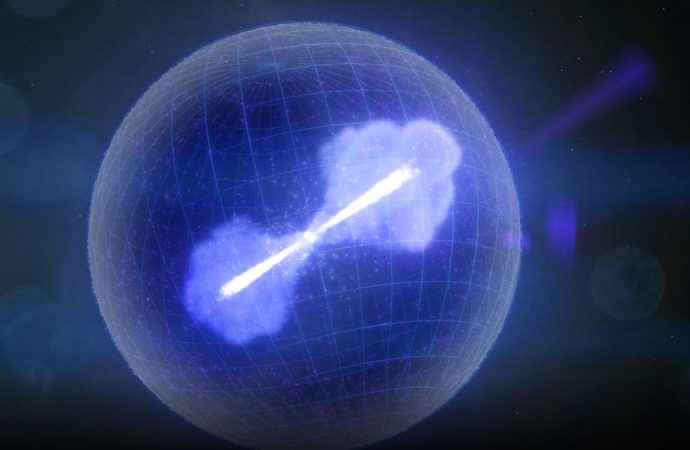The high-energy flash came from an imploding star, not colliding neutron stars
Source: Science News
A surprisingly short gamma-ray burst has astronomers rethinking what triggers these celestial cataclysms.
The Fermi Gamma-ray Space Telescope detected a single-second-long blast of gamma rays, dubbed GRB 200826A, in August 2020. Such fleeting gamma-ray bursts, or GRBs, are usually thought to originate from neutron star smashups. But a closer look at the burst revealed that it came from the implosion of a massive star’s core.
In this scenario, the core of a star collapses into a compact object, such as a black hole, that powers high-speed particle jets. Those jets punch through the rest of the star and radiate powerful gamma rays before the outer layers of the star explode in a supernova (SN: 5/8/19). That process is typically thought to produce longer GRBs, lasting more than two seconds.
Discovering such a brief gamma-ray burst from a stellar explosion suggests that some bursts previously classified as stellar mergers may actually be from the deaths of massive stars, researchers report online July 26 in two studies in Nature Astronomy.
The first clues about GRB 200826A’s origin came from the burst itself. The wavelengths of light and amount of energy released in the burst were more similar to collapse-related GRBs than collision-produced bursts, Bing Zhang, an astrophysicist at the University of Nevada, Las Vegas, and colleagues report. Plus, the burst hailed from the middle of a star-forming galaxy, where astronomers expect to find collapsing massive stars, but not neutron star mergers — which are generally found on the fringes of tranquil galaxies.
Another group, led by astronomer Tomás Ahumada-Mena of the University of Maryland in College Park, searched for the supernova that’s expected to follow a GRB produced by a collapsing star. Using the Gemini North Telescope in Hawaii to observe GRB 200826A’s host galaxy, the team was able to pick out the telltale infrared light of the supernova. The burst may have been so brief because its jets had just barely punched through the surface of the star before they petered out and the star blew up, Ahumada-Mena says.
Source: Science News

































Leave a Comment
You must be logged in to post a comment.